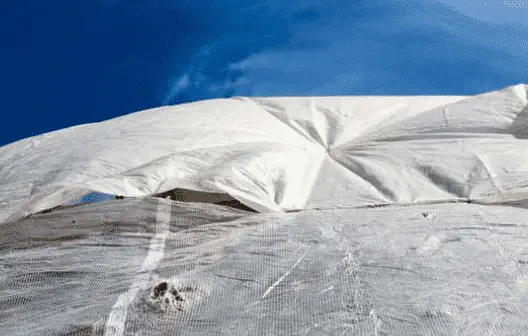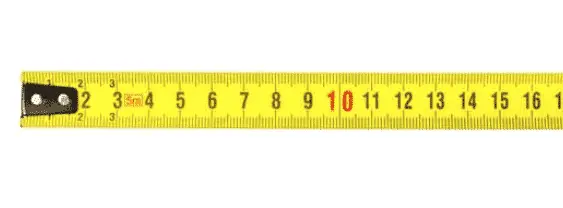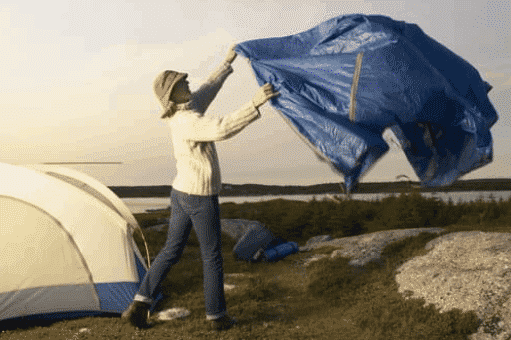Ever wonder why so many people put tarps down under their tent? This isn’t a new phenomenon. Campers have been using ground cloths and tarps under their tents for years. Are ground cloths and tarps really necessary?
Should I put a tarp down under my tent? Although it isn’t entirely necessary, you should put a tarp or ground cloth under your tent. When used properly they protect your tent from punctures and reduce mud and water seepage. Unfortunately, most people use a tarp that’s too big which causes even more problems.
Table Of Contents
Should I Put a Tarp Under My Tent?
Whether or not you need to put down a ground cloth or tarp depends on your tent. It’s mostly there to protect the bottom of your tent from punctures, moisture reduction is secondary. If the weather is nice and you’re not worried about damaging the tent there’s no point in bothering.
It doesn’t make sense to use a $10 tarp to protect a $20 Walmart tent. Cheap tents aren’t designed to hold up for more than a few short camping trips. With a little duct tape and hillbilly ingenuity you can extend their life a bit.
Tarps and Ground cloths really start to make sense once your tent passes the $100 threshold. At that point, it’s worth the hassle of protecting your investment with a tarp or tent footprint. I don’t care how good you are at removing debris sharp sticks eventually make their way into your tent.
How Big of A Tarp Do I Need
| Tent Size | Fold Tarp Down to Size and Use a Grommet Kit to Secure | Alps Mountaineering Tent Footprint Size |
|---|---|---|
| 2-Person | 6×8 Tarp | 7’2″ x4’8″ Footprint |
| 3-Person | 8×10 Tarp | 7’2″ x 6’2″ Footprint |
| 4-Person | 8×10 Tarp | 8’2″ x 7’2″ Footprint |
| 5-Person | 9×12 Tarp | 9’8″ x 7’8″ Footprint |
| 6-Person | 12×16 Tarp | 9’8″ x 9’8″ Footprint |
It would be nice if I could give you a size tarp that will work with every tent, but that’s not how it works. You have to buy a tarp that’s slightly smaller than the dimensions of the outside of your tent.
Just remember that every tent has a different floor size. The above chart uses the average size of tents based on the per person size. It should give you a good place to start, but your tent might be slightly bigger or smaller.
Customize Your Tarp So It Fits Your Tent
Unless you choose a custom tarp you will probably have to fold the sides down under the edge of your tent. Just fold it over and use a cheap Coghlans Grommet Kit to secure the corners and edges. The video below should help you build a tent footprint.
Your tarp will be stronger and the added grommets are convenient when setting up the tent. Plus the grommet kit really comes in handy when customizing gear. I have random grommets all over my pack.
Backpackers Should Use a Tent Footprint Instead of a Tarp
If you plan on backpacking you should use a dedicated tent footprint instead. They’re slightly more expensive, but way easier to use than a tarp. Smaller tent footprints will be much cheaper than large ones.
I really like my Alps Mountaineering’s Tent Floor Saver. It’s a little more expensive than a tarp, but way lighter and easier to deal with. It folds down to about the same size as an envelope.
That’s so much smaller than a tarp. Just make sure whatever you buy is slightly smaller than the floor of your tent. Continue reading below for helps sizing the tent footprint.
Benefits of Putting a Tarp Under Your Tent

There’s really no downside to putting a tarp under your tent. They are somewhat bulky and weigh a few oz, but everything else is positive. Tarps serve 4 important functions.
1) Tarps Protect Your Tent From Punctures
Using a tarp as a tent footprint helps prevent wear and tear on your tent. It gives you one extra layer of protection against sharp surfaces.
Just lay down the tarp and you’re good to go. You don’t have to worry about random sticks and stones punching holes in the bottom of your tent floor. It really cuts down on those random holes that always seem to let in moisture.
Just remember that a tarp won’t solve all your problems. You still need to clean off your site before laying down the tent. It’s just a small layer of protection that helps against minor punctures.
2) Tarps Fight Moisture
Tarps help keep the bottom of your tent dry. It’s just one extra layer of protection between your sleep system and the wet muddy ground.
Just make sure you buy the right sized tarp by reading the section below. It needs to be 2-3 inches smaller than outside dimensions of your tent. Water will pull around the outside of your tent if the tarp is too big.
3) Adds Insulation to Your Tent
Most of our body heat is lost through the ground. Trying to generate enough heat to fight against the earth is a losing battle. It’s all about creating additional insulating layers between your body and the cold ground
It really doesn’t add all that much warmth to your tent, but every little bit helps. Using a tarp under your tent is kind of like laying down a sheet for a picnic. You don’t have to deal with moisture and the cold grass, but it doesn’t add much warmth.
4) Tarps Help Keep The Bottom of Your Tent Clean
Ever get caught in a muddy field? It doesn’t matter what you do. You always end up covered in mud. That’s exactly what will happen to your tent on a rainy weekend.
Do you really want all that mud to get caked on the bottom of your tent? For the price of a cheap tarp it just isn’t worth the hassle. Just buy a tarp or tent footprint and call it a day. It will save you a lot of time and money in the long run.
Even with a tarp you will still need to occasionally wash your tent. I highly recommend Nikwax Tent and Gear Solarwash. It’s one of the only cleaners guaranteed not to damage the waterproof coating on your tent and it also adds UV protection to prevent sun damage.
Watch Out For Pooling
Most people use way too big of a tarp with their tent. They head into their garage and think any old tarp will do. A big tarp will work great in nice weather, but you quickly realize there’s a problem in the rain.
Oversized tarps cause serious pooling problems in the rain. All that runoff from the top of your tent adds up fast. Your tent will end up soaking in a 3″ pool of water. Even the best waterproof tent can’t withstand that much water.
Where Can I Buy Custom Sized Tarps?

After doing some comparison shopping online and messing around with the measurements I realized that custom tarps were out of my price range. They usually cost between $20-$70 depending on the size you need.
Head over to coversandall.com and check for yourself. You might be presently surprised with a good sale, but you might be better off seeing what you can find locally.
I was pleasantly surprised by the tarp selection at my local Harbor Freight. They have like 70 randomly sized tarps on their website so you may be presently surprised.
Sometimes you can get a tent footprint specifically designed for your tent for about the same price. You might want to check out tent footprints on amazon. Maybe you’ll find one specifically made for your tent.
How to Setup Your Tarp as A Tent Footprint
Finding the right size tarp for your tent is 90% of the battle. Before we start make sure you refer to the section above where I talk about sizing and customizing your tarp.
- Choose a tarp that’s properly sized for your tent. Your tarp should be 2-3 inches smaller than the outside dimensions of your tent. This will help prevent pooling.
- Clean up the area where you will be setting up the tent. You want to remove all the branches and sharp rocks. Anything that looks like it could puncture the tent needs to go.
- Follow your tents directions and line it up on top of the tarp. Make sure you line up all the corners and tuck excess tarp under the edge of your tent.
- Premanufactured tent footprints usually have fabric straps with grommets sticking out of the corners. All you do is stick the tent poles through the grommets and continue to setup your tent. Since tarps don’t have grommets you need to find another way to secure it to the corners of your tent. I usually carry a few of those bungee balls, but they aren’t necessary.




